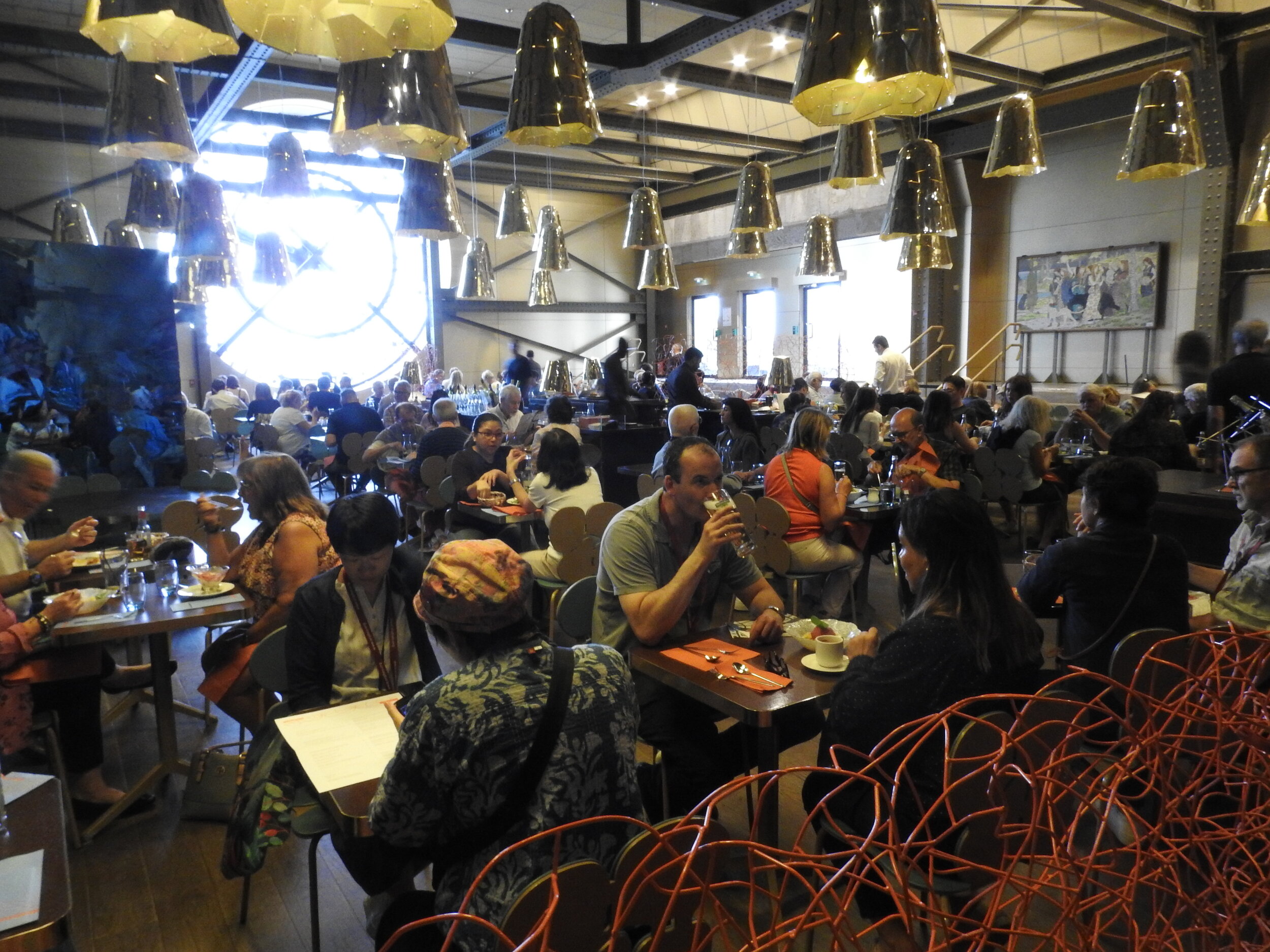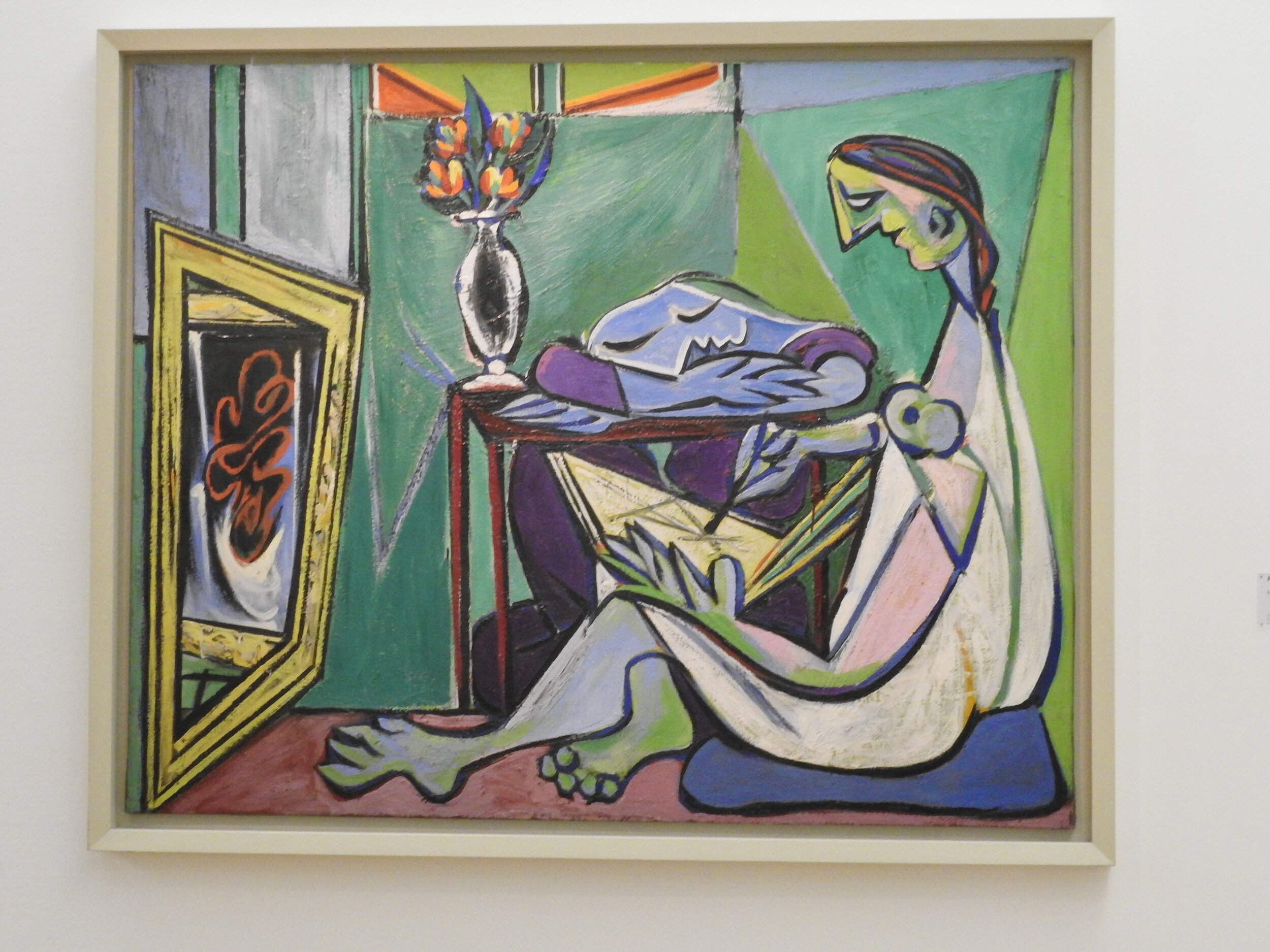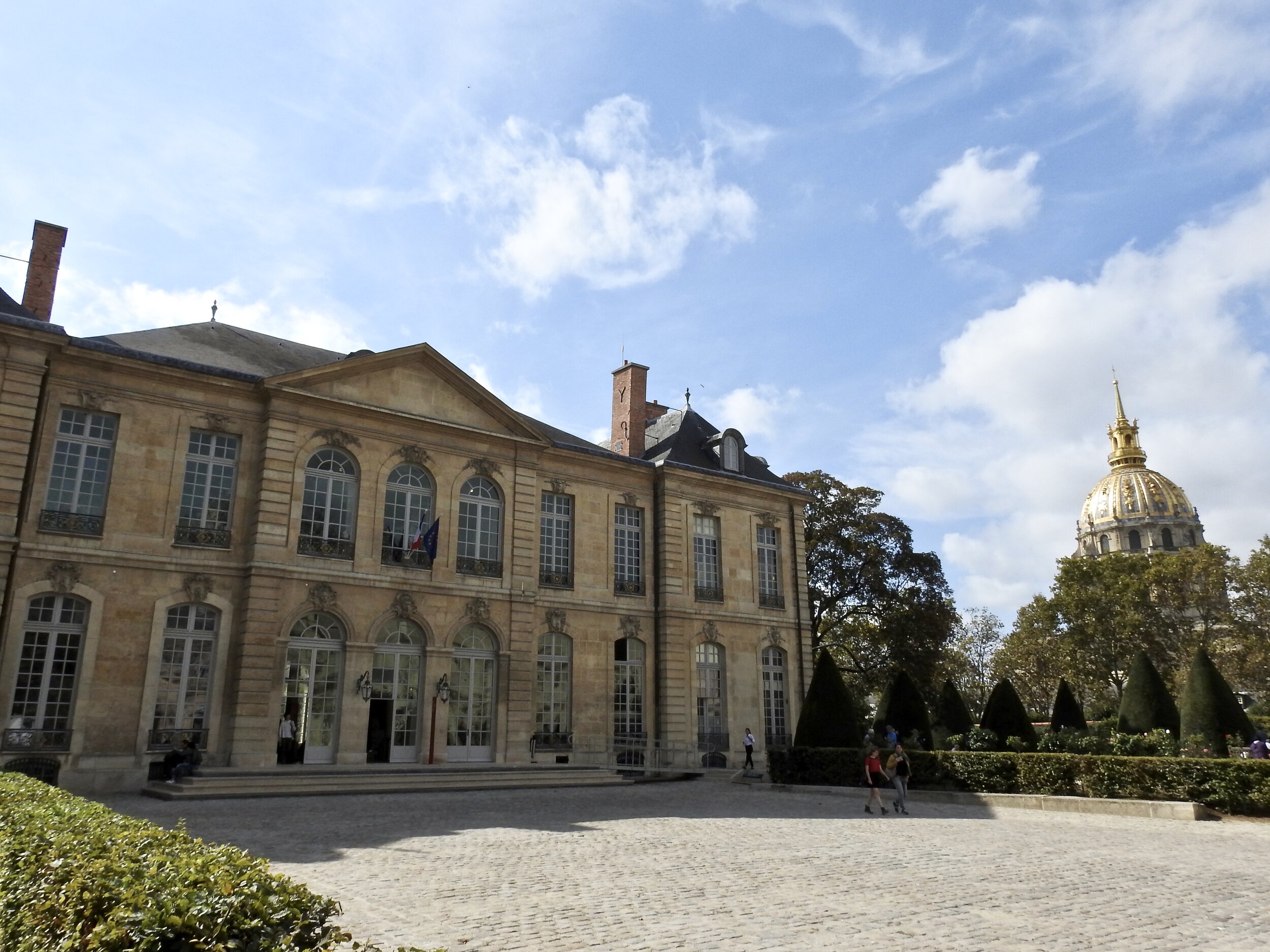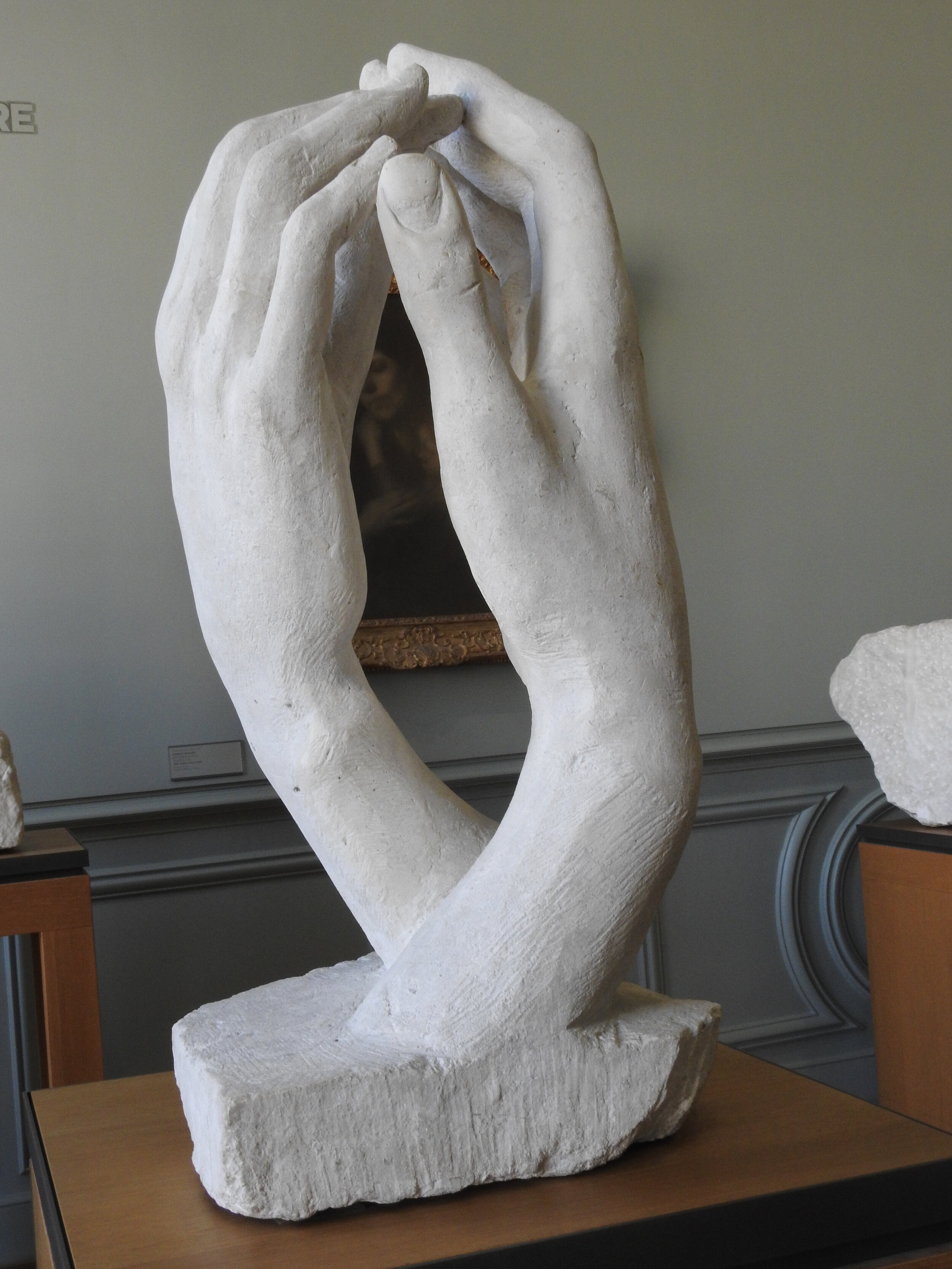Museums:
Paris is known as the City of Light, but it could also be called the City of Museums - more than 130 spread across the city - there are the globally recognized museums: Louvre, d’Orsay, Pompidou - but there are museums focused on matters cultural, military, sports, law enforcement, photography, medicine, science, geology, technology, architecture, decorative arts, fashion and eroticism!
We intended to visit 9 museums or galleries - Le Louvre, Le Musée d’Orsay, Pompidou Centre, Le Musée Rodin, Le Musée Gustave Moreau, Musée de L’Orangerie , Musée Picasso, Le Fondation Louis Vuitton and Musée des Arts et Métiers. We succeeded in going to all of them except l’Orangerie and Picasso - we ran out of time on the day we planned to visit each of these museums. Although disappointed, we consoled ourselves by recognizing that we had seen many Impressionist works at d’Orsay and in a special touring exhibit at the Art Gallery of Ontario, and we had seen a major touring exhibit of the works from the Picasso Museum in Seattle a few years ago. A travellers tip -the Paris Museum Pass can be a good investment if you plan on visiting a number of museums.
At the outset, we should confess, that on our visit to Le Louvre we did not line up to see the Mona Lisa - in our ever so humble opinion, it is over-rated. The glass pyramid so identified with the museum today certainly makes a statement. What is the connection between a pyramid and Le Louvre? Rumour has it that the late President Mitterand had an affair with Dalida - she had a dazzling stage and recording career punctuated by tragedy. Mitterand, like most presidents of La Republic was eager, indeed fixated, with having their name attached to a strong cultural feature of French life. It was during his presidency that Le Louvre underwent a mammoth updating and renovation. Legend has it that the glass pyramid is Mitterand’s tribute to Dalida who was Egyptian by birth. Quite apart from that, there was much debate in the artistic community about the pyramid - was it a folly or triumph? The commission should have been given to a French architect, not an American of Chinese heritage was the public sentiment at the time!
One cannot help but be over-awed by the scale and scope of the collections in Le Louvre. While the collections are impressive, the buildings themselves, apart from the pyramid, are also worthy of admiration. The original buildings date back to 1190 when its purpose was as a fortification. Through the centuries they have served the purposes of both royalty and La Républic, only recently made into a small museum at the turn of the 20th century. Over the last 120 years, Le Louvre has been transformed into one of, if not the prime art museums anywhere. We spent one afternoon there and saw only a fraction of the visible collection. It was revealing that the only limit on photography in the museums was “no flash”. There are, on average, over 20,275 visitors every day throughout the year to Le Louvre. Footnote: the coffee shop in the Louvre is a Starbucks - we did not expect that!
Le Musée d’Orsay which houses the largest collection of Impressionist and post-Impressionist works by the likes of Monet, Manet, Degas, Renoir, Cézanne, Gaugin and Van Gogh was at the top of our priority list. [We would be the first to admit that our taste in art is limited.] However, we did not restrict ourselves to only those collections, we also enjoyed spending some time in Allée Centrale des sculptures - what an amazing collection.
The visitors to both the Louvre and d’Orsay come from all over the world - proving that Paris is indeed a global destination. Traveller tip - prior to taking in the exhibits we had lunch at Café Campana - good food at modest prices [for Paris]
It is hard to believe, but the plan was to demolish La Gare d’Orsay in 1970. It was saved by the then Minister for Cultural Affairs, Jacques Duhamel and President Georges Pompidou. It took till 1986 for the conversion from railway station to museum to be completed. At the time it was controversial, but today people would find it hard to understand why there would have been resistance to the idea.
Centre Pompidou was approached from the Batobus stop at Notre Dame Cathedral - along the way, we noticed that the arrondissement was somewhat “grittier” than others we had traversed. Outside the Gallery was a hang out for “alternative youth”, something you don’t see outside the Louvre or d’Orsay. We suspected they viewed themselves as budding artists waiting to be discovered! The collection of art is very interesting but often hard to understand or interpret. We are guessing that we were not the only ones - the Centre Pompidou is almost deserted compared to the other galleries we had visited.
When reading the information prepared by curators for the various installations, it seems new art movements were equally as “defined” or “closed” as the schools they were trying to replace. The movements established their own rules which were as restrictive as the rules they objected to in earlier art movements - if you opted to stray outside the boundaries of a new art movement, then you were “excommunicated” from the movement.
The architecture certainly stands out in stark contrast to surrounding streetscapes. An architectural competition for the design and construction of the Pompidou Centre was established, and for the first time was open to architects outside France. There were 681 competitors from 49 countries. When it was awarded to a Swede, there was a lot of weeping and wailing in the Parisian chattering classes - how could it possibly be awarded to a non-French citizen?
Traveler’s Tip - be sure to find time to visit Le Musée Rodin which we thought was a gem. Rather than the massive structures of Louvre, d’Orsay or Pompidou, this gallery is in a beautiful garden setting on Rue Varenne. There are smaller sculptures on display in a charming “country house” in the this garden setting. Some of these smaller sculptures were the fore-runners of the giant bronzes which are scattered throughout the garden property. It was most enjoyable to be able to take one’s time and marvel at each sculpture, to view it from all angles and not feel rushed by hordes of other visitors.
Perhaps because we were still recovering from jet lag on our second day, or because we had been walking for several hours through Montmartre, Le Musee Gustave Moreau was not a “hit”. He bequeathed his home to the public as a museum for his artwork; his canvases tend to be on a large scale some measuring 4m x 3m. with themes that did not appeal to us. Traveller tip - you can skip this museum, unless of course you area fan of Moreau.
Le Fondation de Louis Vuitton on the northern edge of Bois de Boulogne is a total contrast to the Moreau Museum. The FLV is home to a museum and performance space. The architect of this stunning structure , called the Iceberg was Frank Gehry, born in Toronto. It is truly an uplifting building to walk through and experience. The design and construction was only made possible by using the latest technologies in materials and construction. If you enjoy modern architecture, it is well worth the effort to take Le Metro to Les Sablons. Unfortunately, we were between exhibits; fortunately absorbing the architecture and design were sufficient rewards. There is one downside - the restaurant is over the top expensive. They had a bottle of Cape Mentelle, a West Australian wine at a 300% mark up!
Le Musée des Arts et Métiers, the last museum we visited was in stark contrast to the others which all been focused on the visual arts whereas this is a museum with a focus on matters scientific. The museum, founded in 1794, has fabulous collections of instruments showing the evolution of technology and the refinement of measurement whether it be linear, volume, weight, temperature, speed, velocity etc. The curators have done a masterful job in formulating 7 collections: scientific instruments, materials, energy, mechanics, construction, communication and transport. One could trace the evolution of navigation, astronomy, architecture and transport. There was one problem - instruments or devices that were on display and described as “old” we could remember from our childhood, a bike with a small petrol engine on the front wheel, an early computer, reel to reel tapes. Or the early electron microscope that looked soooo large and ugly. There were school kids visiting who thought that the iPod [le balladeer numéric] was “quaint” - we did feel ancient, and feared we might be kept to form part of an exhibit!! I had hoped that the transportation section might include a Citröen or two - perhaps a DS Pallas from the 60’s, or 2CV or Traction Avant.

































